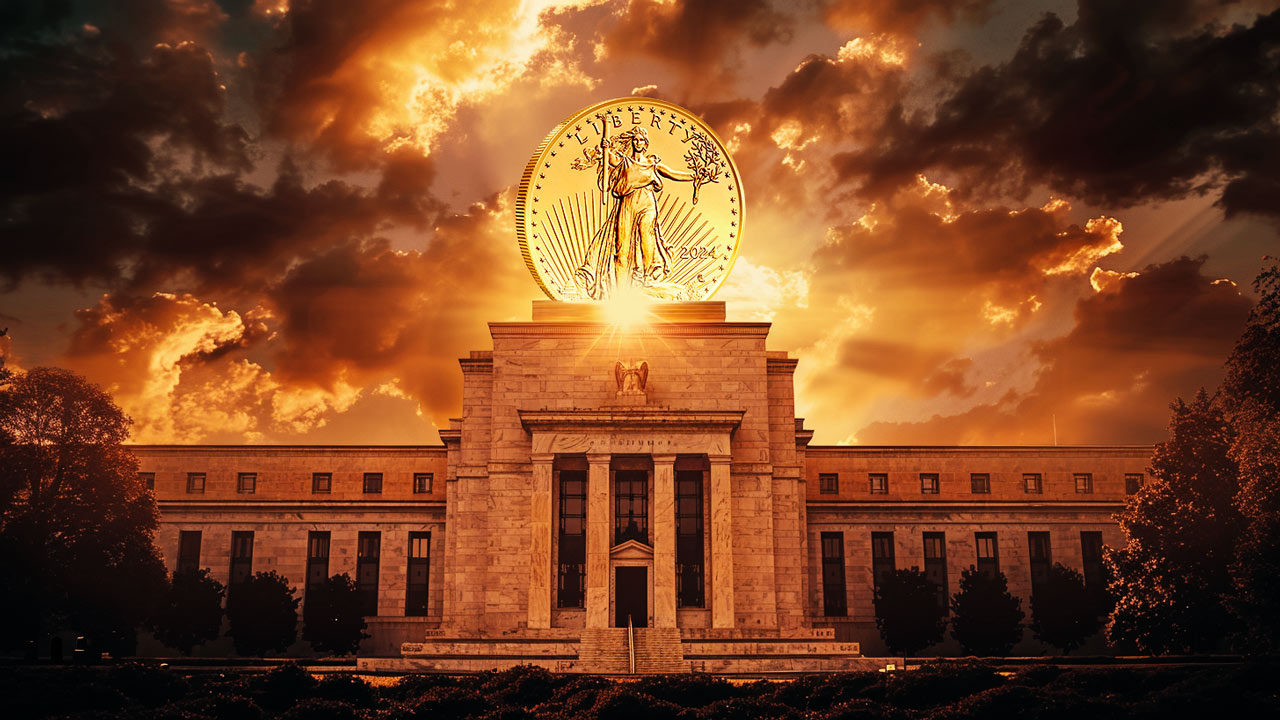CPI vs Rate Cuts: The Fed’s Mission Impossible | SchiffGold

With a hot CPI report casting a shadow of doubt on the likelihood of a June interest rate cut, all eyes are on the Fed. But they’ve caught themselves in a “damned if they do, damned if they don’t” moment for the economy — and the news for gold is good regardless.
With inflation running at 3.5%, it’s no surprise that gold just hit another all-time high — the dollar’s inevitable decline in purchasing power makes gold’s rise equally inevitable. The Fed wants to lower this number, and they know it won’t happen in a lower interest-rate environment. And while Peter Schiff has warned repeatedly in recent months that inflation is still red-hot, the mainstream finance media is expressing predictable surprise that inflation still isn’t under control.
Now that I’m going down the rabbit hole of inflation, here is a chart showing CPI for Food Only.
Pundits will say, “Food inflation has dropped to 2%, I don’t know why people are complaining.”
That 2% is year-over-year.
However, the total food inflation since 2019 is 30%! https://t.co/794ouO1Om4 pic.twitter.com/zmLRCFkCIq
— Kevin – Classical Liberal 🇺🇸 (@gov_fails) April 5, 2024
The Fed also needs lower rates to reduce the massive burden of interest payments that the US owes on its existing debt, which can’t be financed through taxes in a country running a decades-long budget deficit. That means the only way to pay the interest is with more borrowed money. It doesn’t take a Ph.D. in economics to see that’s unsustainable, and even Jerome Powell has expressed concern (without addressing the role of his monetary policy in the problem).
The real estate market is desperate for a rate cut as well, with record numbers of vacant office buildings causing a ticking economic time bomb in American cities. Whether they remain offices or become apartments or something else entirely, it’s an expensive undertaking even under the best-case scenario to rezone, redevelop, and fill these buildings with actual human renters. But with high-interest rates, high prices, and a wall of loans due to mature as the post-covid work-from-home trend settles in as a new normal, it’s a bad time to have money tied up in CRE.
A lower-interest-rate environment doesn’t solve any of these problems sustainably. At best, it delays them or replaces them with a different set of problems instead.
If the Fed does cut rates, it encourages borrowing and spending and drives banks to create more new money in the form of loans. This adds to inflationary pressure and encourages investors to safe havens in the form of commodities like gold that can’t be so easily debased. But even if they don’t cut because inflation keeps sticking as even mainstream economists now fear it might, the price of gold goes up along with almost everything else that’s being priced in dollars.
Automated, algorithmically-traded sells can contribute to drops in gold against USD in response to economic data like (cooked) jobs reports, or new inflation numbers. But these drops are being quickly bought up by investors who see the writing on the wall. They see these dips accurately as buying opportunities, as discussed on Peter Schiff’s recent podcast episode, Any News Is Good News for Gold:
“As soon as this stronger-than-expected number came out, just like Pavlov’s dog, these programs sold gold, so gold initially went down. But it didn’t stay down. Because the real money, the real buyers came in, and bought what the programs were selling, and then gold just spiked, because this is a real move. The real gold buyers don’t care about these jobs reports…they probably realize that they’re BS.”
That was in response to employment data that came out in March, which the government won’t tell you show “strong” jobs numbers only because struggling Americans are being forced to take on multiple income streams to feed themselves and their families. In the case of CPI, a higher number means the dollar is worth less, and a lower number means a higher likelihood of rate cuts — that’s a double-edged sword and mission impossible for the Fed, but a win-win for gold.
Whether or not inflation keeps rising and the Fed only cuts rates once, twice, or not at all in 2024, all signal economic uncertainty. Cuts also won’t solve the economic trouble brewing in China, or continuing geopolitical tensions in Ukraine and the Middle East, which the US is determined to continue meddling in. The common denominator: gold’s attractiveness remains, and its price will continue to rise.
Call 1-888-GOLD-160 and speak with a Precious Metals Specialist today!








